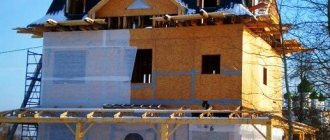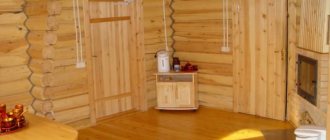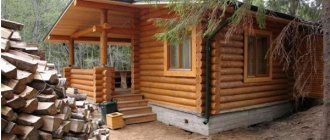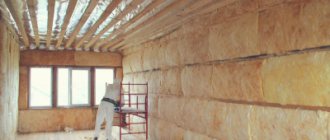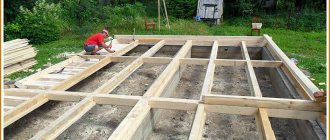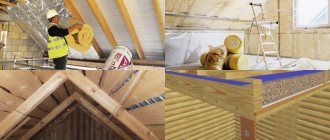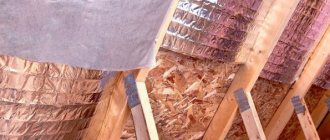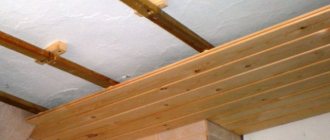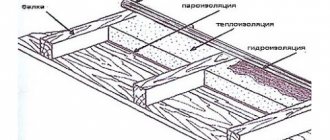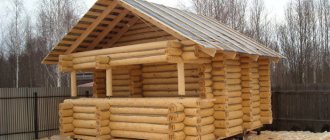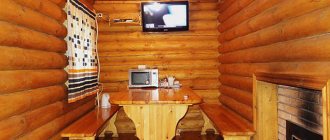- How does foil work?
- Application of foil
- The principle of operation of foil insulation
If you are going to build a bathhouse, then first of all you need to think about its insulation. Without high-quality insulation, a bathhouse will not be able to perform even its basic functions. Particular attention should be paid to insulating the steam room with your own hands.
However, there are a huge number of materials and technologies that allow insulation to be carried out efficiently and quickly.
Foil insulation for thermal insulation of a bath
One of the best solutions for thermal insulation of a sauna or bathhouse is the use of foil insulation material to protect the walls.
Installation of foil insulation
Foil insulation has a fairly wide range of applications, it is used for insulating pipes with cold and hot water, for insulating walls, as a substrate when laying parquet or under laminate, for insulating hives, soundproofing rooms, roofing work, insulating ventilation ducts, thermal insulation of industrial equipment.
This insulation is used to line the walls from the inside of the room behind the radiators to reduce heat loss, since it is heat-resistant. The following brands are represented on our market: Alufom, Ursa, Penofol, Folgoizol, Izolon, Knauf, Lavsan, Magnel, Megaflex, Penoplex, Ecoteplin, the most popular type is with foil and foam rubber.
How much does this material cost? It all depends on the manufacturer you choose; the price ranges from $1 to $4 per meter2. Let's try to take a closer look at how to properly place this material on various surfaces.
On the wall
Often, walls are insulated with similar material in baths, saunas, and balconies; in this case, polyethylene-based material is used. It is recommended to use insulation with a thickness of at least 10 mm; such material can be covered with foil on one side or on both sides.
If we consider the options on what it can be attached to, a construction stapler or double-sided tape is best; you can also use a special rubber-based glue; the joints of the sheet are glued with tape. If we are talking about insulating a balcony, then you need to lay an additional thermal insulation layer, for example, polystyrene foam, basalt material or something else.
Is it possible to insulate without them? Of course yes, however you will not get the desired result. In order for the insulation to fulfill its intended purpose, it is necessary to figure out how to install it correctly. The distance between the material and the sheathing should be approximately 20 mm, this will create some kind of air gap that will serve as an air barrier.
Let's take a closer look at how to properly mount it to the wall:
- Attach the foam to the previously prepared surface.
- Secure foil insulation on top of it.
- Then install wooden blocks on top, then sew everything up with the selected material (gypsum, siding), and seal the joints with foil tape.
To the ceiling
As a rule, the maximum thickness of insulation is selected for the ceiling, since all the heat rises and its maximum losses occur there. Thanks to its reflective surface, the insulation is able to reflect up to 90% of the heat, thus increasing the overall efficiency of the insulation system by 60%. These characteristics can be obtained subject to compliance with the installation rules.
To carry out the work you will need the following:
- Construction stapler.
- Small nails.
- Hammer.
- Insulation material.
- Aluminum tape.
This product is sold in rolls; for ease of installation, cut it into the required lengths. Which side should you lay it on? Installation should be done so that the foil surface is indoors (with the silver side facing you). So, let's figure out how to nail this material.
The gap between the finishing material and the insulation should be about 20 mm; this buffer zone protects the room from heat loss.
When attaching to the ceiling, secure it using a stapler; the fastening should be butt-to-edge, and seal the assembly seams with aluminum tape to ensure hydro- and thermal insulation.
On the floor
Perhaps the installation process on the floor is the most labor-intensive, and there are more possible variations, since you can lay a warm floor system (not just a water floor) under linoleum, parquet, laminate. All this is possible thanks to its non-flammable base, since there is reflective foil on one side and foam rubber on the other.
Some manufacturers have variations with foam on both sides. So, let us describe in more detail the process of installing a wooden floor. To do this, we will need the following: a construction knife, insulation, aluminum tape, meter, grinding machine, antiseptic primer, putty.
For this type of work, it is better to give preference to a material with an adhesive backing, however, you can get out of the situation with double-sided tape.
Work order:
- Prepare the base, remove the baseboard, sand the floor; if there are any uneven spots, remove them using putty.
- Treat with antiseptic liquid. After drying, take measurements and cut into the required pieces. Lay a sheet with foam inside and foil outside.
- Seal the seams using metallic tape.
- Then lay parquet and laminate.
If you are insulating a concrete floor, the technology is similar, however, it is better to use specialized rubber adhesive for gluing. But in all other respects the technology is the same. If you have a very cold floor, in this case, wooden logs are stuffed onto the insulation, the niches in them are filled with insulating material, the top is sewn with sheets of OSB boards, then the selected covering material is primed and laid.
Reviews
Dmitry, 37 years old.
This month I decided to combine a balcony with a room. We had to tinker with the insulation: there were large seams between the walls; the front side of the loggia was made of slate. The question came up, what material should we use to insulate? I consulted with many people, they recommended many different materials. However, everyone said that isolon is needed for thermal insulation. I would like to say that the frosts have passed us by. Working with isolon was very easy.
Yuri, 48 years old.
Before building a bathhouse at the dacha, we needed to look through a lot of different literature; we could not decide on the required diameter. And they found this Izolon. I read the specifications and decided to make a bathhouse from ordinary boards, and cover all the walls from the inside with this material. I consulted with specialists for a long time.
Step-by-step instructions on how to insulate a bathhouse with isolon
Before work, it is necessary to calculate the amount of isolon according to the area of the walls and ceiling of the bathhouse. To do this, you need to multiply the length of the wall by the width and multiply between them. The resulting figure is 4. Add the ceiling area to the result and subtract the doorway. The material is laid without overlap, so metallized tape is purchased for a hermetically sealed connection.
The walls of the bathhouse are sheathed with isolon directly onto the wall. You can first perform insulation with mineral wool.
For work you will need materials and tools:
- A construction stapler with 10 mm staples or a hammer with thin nails.
- Izolon.
- Foil tape.
- Scissors, stationery knife (necessary for adjusting the insulation).
After everything has been purchased, we proceed to insulating the walls and ceiling.
Installation of insulation on the walls and ceiling of a bathhouse
It is necessary to insulate the walls and ceiling of the bathhouse with isolon between the finishing and the inner wall. A ventilated gap of at least 0.5 cm must be left between them so that moisture can evaporate.
Finishing material is attached to the insulation on top.
The work is carried out in the following stages:
- The walls are cleaned of dirt and dust using a brush with stiff bristles. The tree is coated with an antiseptic, lapyrimide.
- Izolon is rolled out onto the wall and ceiling with the foil side inward and secured to the wooden wall with a stapler. When the bathhouse is built from blocks or bricks, it is necessary to fill the walls with bars 20–30 mm thick, 1–1.5 m long, in a checkerboard pattern. The insulation will be attached to them. Izolon does not allow moisture to pass through to the wood, so there is no need to use a vapor barrier under it. If you don't have a stapler, use a hammer with small nails.
- The joints are taped with metallized tape. The same applies to places where the material is attached with staples. Untaped joints will not be protected, and moisture will get inside under the insulation. The walls will begin to rot.
- A lathing made of 40x40 mm timber is mounted on top of the insulation, for further finishing with clapboard or other material. The sheathing pitch is no more than 1 m.
Stages of work
At the first stage, it is necessary to lay a vapor barrier film on the attic side. The foil layer should face down.
If the width of the material does not allow covering the entire attic, then the second and subsequent sheets are overlapped by 10 cm over the previous one.
To do this, they need to be secured with tape.
Insulation is laid over the vapor barrier. To do this, you can use any thermal insulation material listed above.
The material is covered with a layer of waterproofing on top. You can use polyethylene film or other solutions as it.
The top of this layer cake is sewn up with plywood or boards. And the bottom is hemmed with clapboard or other decorative material.
With proper installation of all layers of such a cake, the ceiling in the bathhouse will become an excellent barrier to warm air. It will reliably maintain the temperature and reduce the amount of wood used to heat the bath.
Still have questions? Ask the engineer, leaving your number on the form.
Folgoizolon - foil insulation for the ceiling
Folgoizolon is a fairly new insulation on the market, providing high-quality heat, moisture and noise insulation. The basis of the material is polypropylene or foamed polyethylene. Based on this, two types of products are distinguished, designated PPE and NPE.
Advantages of folgoizolone:
- the lightness of the material, which makes it possible to finish any base provided there is no need for preliminary measures to strengthen it;
- small thickness - does not reduce the dimensions of the room, maintaining its usable area;
- elasticity - unlike some insulation materials (such as polystyrene foam boards), this foil material allows you to avoid spending time on careful preliminary leveling;
- multifunctionality, or a “3 in 1” combination, contributes to a significant reduction in the costs of purchased materials (mastics, films, fasteners, etc.) and a reduction in construction or repair time;
- ease of cutting - foil isolon can be easily cut with a sharp knife, which eliminates the need to use specialized tools;
- the absence of moisture absorption is one of the most important factors that ensures the extension of the service life of not only the foil-isolon itself, but also the structural elements it covers;
- environmental safety - does not emit harmful substances even at temperatures above 100ºС. Among other things, this material will never harbor insects or rodents.
So, is it possible to insulate the ceiling with foil insulation? Taking into account the material above, we can safely give a positive answer.
Izolon technical characteristics
During operation, it is necessary to take into account that depending on the type, the characteristics will differ:
PPE – cross-linked closed cell insulation
- thickness ranges from 1 to 50 mm;
- sound insulation reaches about 68%;
- water absorption no more than 1%;
- the density of the material is up to a maximum of 200 kg/m³;
- degree of reflection by foil 95–97%;
- operating temperature ranges from -50˚С to +85˚С
NPE – non-stitched gas-filled
- the thickness size is thinner and varies from 1 to 16 mm;
- sound insulation is already less and reaches no more than 13%;
- almost complete water-repellent effect, absorption rate no more than 0.2%;
- the material is lighter, its density is 19–35 kg/m³;
- can be used in the temperature range from -80˚С to +80˚С.
The service life of both varieties reaches about 100 years. Izolon quite painlessly tolerates negative external environments, such as negative atmospheric phenomena or aggressive chemical compounds - oil or gasoline.
Foil-coated isolon will always find at least one extra advantage over regular isolon. Finding a better material for thermal insulation with the same thickness will be extremely problematic. The use of foil isolon is so widespread that it can be found everywhere, from insulating loggias to arranging medical refrigerators. Incredibly, the thinnest layer of material produced by the industry reduces heat loss by 75%.
Peculiarities
Foil-coated isolon is a thermal insulation material based on foamed polyethylene. The thermal performance indicator is achieved by applying a metallized polypropylene film to the material. It can cover a layer of polyethylene on one or both sides.
Instead of a metallized film, foamed polyethylene can be covered with a layer of polished aluminum foil - this does not in any way affect the thermal insulation properties of the product, but helps to increase its strength.
High thermal insulation rates are achieved through the use of a foil layer, which reflects 97% of thermal energy, while the material itself does not heat up. The structure of polyethylene requires the presence of tiny air bubbles, which ensure low thermal conductivity. Foil-coated isolon operates on the principle of a thermos: it maintains a given temperature range indoors, but does not heat up.
In addition, the material is characterized by high vapor permeability (0.031-0.04 mg/mchPa), which allows surfaces to breathe. Thanks to the ability of isolon to transmit moisture vapor, it is possible to maintain optimal air humidity levels in the room, avoiding dampness of walls, insulation, and finishing materials.
The moisture absorption of the insulation tends to zero, which guarantees protection of surfaces from moisture penetration, as well as the formation of condensation inside the material.
In addition to high thermal efficiency, foil-coated isolon demonstrates good sound insulation (up to 32 dB and higher).
Another plus is the lightness of the material, combined with increased strength properties. The low weight allows the insulation to be attached to any surface without requiring prior reinforcement.
It is important to remember that you cannot apply plaster or glue wallpaper on top of isolon. These and other finishing materials, fixed directly to the insulation, will pull it back under their weight.
Since the material is not designed to withstand such loads, it will simply fall off. Finishing should be done only on a special sheathing.
Isolon is a non-rotting, environmentally friendly material that does not emit toxins during operation. Even when heated, it remains harmless. This significantly expands the scope of application of isolon, which can be used not only for exterior, but also for interior decoration of residential premises.
Along with environmental friendliness, it is worth highlighting the biostability of the product : its surface is not susceptible to attack by microorganisms, the insulation does not become covered with mold or mildew, and does not become a home or food for rodents.
The metal film demonstrates chemical inertness, resistance to mechanical damage and atmospheric conditions.
The material is thin and therefore is the most suitable material when it comes to internal thermal insulation. For materials of this type, not only technical indicators are important, but also the ability to preserve as large a usable area as possible after insulation - foil insulation is among the few insulating materials that copes with this task.
The disadvantage of the product is sometimes called its higher cost compared to other popular insulation materials. However, the difference in price is offset by the ease of installation of the material (you can save on the purchase of vapor and waterproofing materials, the services of professionals), as well as the high thermal efficiency of foil-isolon.
The calculations show that after its installation it is possible to reduce the cost of heating the room by 30%. It is important that the service life of the material is at least 100 years.
Heat-reflecting isolon comes in 2 types: PPE and NPE . The first is a stitched insulation with closed cells, the second is an unstitched gas-filled analogue. There is no big difference between the materials in terms of thermal insulation abilities.
If sound insulation performance is important, then preference should be given to PPE, the sound insulation of which reaches 67%, while the same figure for NPE is only 13%.
NPE is suitable for organizing refrigeration equipment and other structures exposed to low temperatures. The operating temperature is -80... +80 C, while the use of PPE is possible at temperatures -50... +85 C.
PPE is denser and thicker (thickness from 1 to 50 mm), moisture-resistant material. NPE is thinner and more flexible (1-16 mm), but is slightly inferior in moisture absorption.
The form of release of the material is washed and rolls. The thickness of the material varies between 3.5-20 mm. The length of the rolls ranges from 10 to 30 m with a width of 0.6–1.2 m. Depending on the length and width of the roll, it holds from 6 to 36 m2 of material. Standard mat sizes are 1x1 m, 1x2 m and 2x1.4 m.
Today you can find several modifications of folgoizolone on the market.
- Isolon A. It is an insulation material, the thickness of which is 3-10 mm. It has a foil layer on one side.
- Isolon B. This type of material is protected with foil on both sides, which ensures better protection against mechanical damage.
- Izolon S. The most popular modification of insulation, since one of the sides is sticky. In other words, it is a self-adhesive material that is extremely convenient and easy to use.
- Izolon ALP. It is also a type of self-adhesive insulation, the metallized layer of which is additionally protected by a polyethylene film up to 5 mm thick.
How to use?
The scope of application of isolon goes far beyond the boundaries of the construction field: it is actively used in the production of automobiles, refrigeration equipment, the medical industry, for plumbing needs, and even in the oil industry. It has also found its application in the production of life jackets, sports equipment, and packaging.
Most often, izolon is used for installing heated floors and insulating loggias and balconies. There are technologies that make it possible to use isolon in insulating external and internal walls and roofs, but the principle, as they say, is the same. The only difference is that in cold, unheated rooms, which include a balcony, one isolon is not enough, then a sandwich technology of cotton wool insulation or polystyrene foam and foil isolon is used. If the room is small and you cannot allocate additional space for insulation, then you should increase the thickness of the isolon to at least 2 centimeters. Using the example of insulating a loggia, we will show the principle by which you can insulate (with certain deviations depending on your conditions) any surface.
Very few people still know how to properly attach isolon, since the technology is quite new. Izolon on the walls is placed with foil inside to reflect heat. If you prefer a sandwich, then between two layers of isolon there is a gasket made of mineral or glass wool, polystyrene foam, expanded polystyrene, and a lathing for decorative design materials, such as plastic panels, lining, etc. is mounted on top. All seams are carefully taped with special reflective tape; tightness during the insulation process is very important, so this advice should not be neglected.
In order to describe all the processes more clearly, here are brief step-by-step instructions:
- Clean and dry the surface to which the attachment will be made.
- Measure the area, prepare the required amount of material.
- Lay out and attach the isolon to the surface with the foil facing you.
- Tape all existing seams and fastening points with special tape.
Installation of isolon
The manufacturer gives several more ways to use isolon:
- Using sheets for hardening concrete - isolon prevents heat loss and rapid drying, therefore it is invaluable as a material for laying concrete.
- As a bedding under artificial turf.
- As dividing partitions when pouring the foundation.
- When insulating water supply, drainage, ventilation pipes.
- As heat-reflecting screens (attaching the isolon to the wall behind the radiator allows you to redirect warm air masses into the room, which prevents rapid cooling. According to statistics, energy savings in this case exceed 25%).
Areas of use
The main areas of application of isolon are construction and renovation of buildings, as well as the automotive industry. It is often combined with other thermal insulation materials - expanded polystyrene (foam plastic, penoplex, etc.).
Use in construction and renovation:
- insulation and sound insulation of walls, roofs, floors, floors, foundations in residential, utility and industrial premises - in private houses, apartments, basements, garages, balconies, loggias, workshops, warehouses, offices, gyms;
An example of using foil insulation on a balcony
- heat and vapor insulation of rooms with high air humidity - baths, saunas;
- insulation of pipelines;
- creating a self-leveling floor - a layer of thin isolon, laid on a screed, protects against leakage of the composition to the lower floor, and also serves as thermal protection.
- insulation of the internal surface of the body (floor, hatch doors) in order to reduce noise and vibration levels, as well as to retain heat;
- protection of metal parts of the car from corrosion.
Application of isolon in the automotive industry:
Isolon foil has found application in other areas, including:
- medical industry - packaging of fragile equipment, production of orthopedic insoles, shoe inserts, thermal blankets and the like;
- production of refrigeration, heating and climate control equipment;
- manufacturing of workwear - suits for sports, life jackets and so on.
Types of material
Let's look at what types of insulation are called:
- With foamed polyethylene, it looks like a roll of self-adhesive material, similar to film with foil. Scope of application in various equipment, lining of pipes, shafts, roofs, since it has a high temperature range from -160 to +160 degrees, it is fire resistant.
- Mineral wool with foil coating can have the form of a plate or cylinder. It also has a high degree of fire resistance.
- Expanded polystyrene, coated with foil on both sides. It also has a wide temperature range, the diameter can be 5mm, 10mm, 15mm.
- Basalt, just like the materials described above, is made on the basis of foil material, however, thanks to its unique technology, it can withstand temperature fluctuations from -200 +600 degrees, and is resistant to aggressive chemical environments.
How to put insulation on pipes
As a rule, such material has the form of a pipe “cocoon” made of mineral wool (withstands high temperatures) or polystyrene foam (moisture resistant). And how to insulate them, the question disappears in itself, since they have the appearance of a “cocoon”, which is put on top and fixed. There are main ones for chimneys of various diameters and temperature conditions.
However, if you decide to purchase sheet insulation, you may be faced with the question of how to glue it to metal? Aluminum tape will come to your aid, which is wound onto the insulation over the pipe. And, as in the options described above, you need to wear it with the shiny side facing you.
Production stages
The isolon production process is divided into three main stages:
- Mixing. In one container, polyethylene in granules, a foaming agent and “cross-linking” agents are combined, that is, substances that irreversibly transform polymer molecules.
- Extrusion. The polymer mass heats up and melts. In parallel with this, future isolon sheets are formed.
- Foaming. The sheets are sent to the oven on a conveyor belt. Under the influence of high temperature, the foaming agent is activated, and many pores are formed in the structure of the material.
When producing foil-coated isolon, at the last stage, thin aluminum foil is glued to a layer of foamed polyethylene using the lamination method.
Depending on the characteristics of production, the material is divided into cross-linked (PPE) and non-cross-linked (NPE). Let's look at what it is - isolon PPE. During its manufacture, additional bonds are formed between molecules, resulting in the formation of a new strong network or cross-linked structure of the material.
Izolon PPE is more resistant to aggressive environments. Its heat, sound and moisture resistance is higher than that of the non-stitched version.
In addition, the following types of foil insulation are distinguished:
- “A” – isolon, coated with aluminum on one side, its thickness varies from 3 to 10 mm;
- “B” is a foamed polymer covered with foil on both sides; it is considered more resistant to mechanical stress;
- “C” – insulation with a self-adhesive base, it is most often used in everyday life due to its ease of installation;
- “ALP” is a self-adhesive isolon, during the production of which a transparent film up to 3 mm thick is applied over the foil, its purpose is additional protection.
Thermal insulator with foil on one side
The choice of material thickness depends on the purpose of its use. For additional insulation of the floor, foamed polyethylene with a thickness of 2-4 mm is suitable, for absorbing sounds in the room and insulating the roof - 4-10 mm, for floors between floors - 10-30 mm.
Note: The use of aluminum foil increases the heat and light reflecting properties of isolon, increasing this figure to 98%.
Wall insulation technology
Insulation technology:
- The bars are attached to the cleaned walls with dowels in increments of 50-60 cm. Sheets of isolon PPE are laid on them end-to-end with the foil side inside the room and attached to the bars using a construction stapler.
- Then a 2nd row of slats is placed on the PPE isolon layer perpendicular to the first row located under the insulation.
Important: the second row of slats serves as the basis for attaching the final finish - plastic or wood panels, or plasterboard sheets.
The latter need to be puttied and then painted or wallpapered.
Penofol ceiling insulation technology
The product can be laid on a floor made of any material, but operations must be performed in a certain sequence. Deviation from the technology of installing penofol on the ceiling will reduce the expected effect. In addition to the insulation, you will need glue to fix the insulator and metallized tape for the joints. The rules for choosing the components of the insulating “pie” are written below.
Selecting consumables
For reliable insulation, along with penofol, glue is purchased for fixing to the surface and adhesive tape for connecting parts of the canvas.
There are several modifications of penofol that can be used to insulate the ceiling:
- Type "A". Foil on one side only. Usually used with other thermal insulators as additional insulation.
- Type "B". Foil film is located on both sides. It has proven itself well as the main heat insulator.
- Type "C". There is a sticky layer that makes it easy to attach.
- Type "ALP". The metal coating is protected with polyethylene film. They are often placed on the floors of specialized premises - greenhouses, incubators, chicken coops. Film-reinforced insulation is used in basements where it is not protected by a suspended ceiling.
It is not recommended to buy Penofol-2000. Its cost is low, but it retains heat poorly.
Before insulating the ceiling with penofol, check the quality of the product. Pay attention to the following factors:
- The product must be manufactured in accordance with the requirements of TU 2244-056-4696843-98.
- The material is sold in rolls, the length of the product depends on its thickness.
- Tears and through holes are not allowed on the canvas.
- The winding of the rolls is tight, without distortions. The product is packaged in plastic film, the edges of which are secured with adhesive tape.
- Make sure that the product is stored on racks or pallets at a temperature of 20 degrees and a relative humidity of 50-70 percent. It is not allowed to store material closer than 1 meter from heating devices.
Products must have a label containing basic information:
- Name of the manufacturer;
- Basic dimensions;
- Release date and warranty period, usually the manufacturer allows storage of the material for no more than 1 year;
- Thermophysical indicators;
- Scope of application of the material;
- The protective layer on type “C” samples should be easy to peel off.
For gluing to the ceiling, special or universal adhesives are used. The requirements for their composition look like this:
- The product is intended for indoor use. The certificate of conformity for the adhesive indicates the degree of toxicity of the composition.
- Ability to withstand large temperature changes.
- The solution contains antiseptic additives.
- Retains its properties for a long time.
- The composition does not contain solvents that negatively react to the material from which the ceiling is made.
- The product takes into account the operating conditions of the room. For example, sauna glue must withstand high temperatures and humidity. MV-40 has these properties. In residential premises, it is necessary to use a solution that is non-toxic and completely safe for humans. Typically, “Universal” or “Express” adhesives are used; they dry quickly.
- Welcon Easy-Mix PE-PP 45 is intended exclusively for penofol. The only drawback is that it takes 1 day to completely dry.
For fixation, it is also possible to use the following solutions: 88Luxe; Nairit-1 (88-P1); Foam rubber-2(88-P2); 88 Metal. If the insulation area is large, take large packages of Facade and BOLARS substances. They are sold in bags of 25 kg.
To reliably connect pieces of fabric to each other, the adhesive tape must have the following properties:
- A reinforced metallized product with an adhesive layer at least 20 microns thick.
- The instructions for use indicate its purpose - sealing and thermal insulation of the surface.
- The tape does not lose its properties when interacting with water and dust, and is well resistant to bacteria.
- The product has great strength and wear resistance.
- Maintains quality in the temperature range -20+120 degrees.
Gluing penofol to the ceiling
The use of glue can significantly reduce the time it takes to insulate the ceiling with penofol from the inside. This method is low-cost because it does not require special devices and is easy to implement. The sample is very light, so strength calculations of the adhesive joint are not required. If the insulator is used as the main insulating layer, choose a thick product.
Perform the following operations:
- Clean the ceiling from loose plaster and decorative coating. Make sure the surface is level and, if necessary, finish it with plaster.
- Scrape off mold and mildew, dry the area with hot air and treat with an antiseptic.
- Wipe oil and grease stains with solvents.
- Seal cracks in concrete slabs with cement-sand mortar.
- In wooden ceilings, fill small gaps with caulking, large ones with tow and foam.
- Cover all wooden structures with special means to protect against fire and rot. Apply new protective layers only after the previous one has completely dried.
- Remove any sharp objects that could damage the foil.
- Treat the ceiling with a primer whose composition matches the adhesive. Fulfilling this condition will create the strongest possible connection.
- Prepare the adhesive solution. If the material has a sticky layer, it is enough to remove the protective coating.
- Apply a thin layer of the mixture to the surface without foil and spread it evenly over the surface. No omissions are allowed. Coat the edges of the sheet especially carefully. Allow 5-60 seconds to thicken the solution, which will provide better adhesion.
- Press the canvas tightly against the ceiling (or other insulation) and gently smooth it until it sticks. Seal the joints with reinforced tape. If this is not available, you can use silicone sealant. Do not leave joints untreated.
- When laying, make sure that the sheets do not end in the corners of the room. Pieces must not be overlapped. Also check where electrical wires and foil touch. Aluminum conducts electricity well, so check the insulation of wires located close to the insulating layer.
- Install the suspended ceiling.
Laying penofol on a wooden sheathing
This option is much more effective than simply gluing it to a flat surface, due to the presence of an air gap. The gap also allows air to move between the ceiling and the insulation and remove accumulated moisture, preventing condensation from forming.
The work is performed in the following sequence:
- Secure penofol to the surface with wooden slats 15-20 mm thick. The distance between the bars is no more than 100 mm. Glue the joints of the sheets with reinforced tape. Make sure that the bottom of the slats is located in the same horizontal plane.
- Attach the second layer of penofol to the bars from below using a furniture stapler. In this case, sheets with double-sided foil are usually used.
- Install the second row of sheathing.
- Install decorative finishes, such as MDF panels, plastic lining, etc.
Insulation of ceiling and floor with Izolon
Metallized lavsan film Izolon.
The simplest option for insulating a floor with Izolon is to use it as a lining under a laminate, although it is also possible to lay linoleum on top of foamed polyethylene. In addition, this material can be used in structural elements of a building, for example, on the ceiling and wooden floor laid on joists. The installation technique in both cases is very similar, so we will consider them together.
Naturally, Izolon thermal insulation as an independent insulation gives insignificant results, since its thickness is too small. Therefore, in order to get a high-quality thermal insulation cake, you need to use more solid insulation materials, for example, mineral wool. In this case, in addition to auxiliary protection against heat loss, foamed polyethylene can act as a vapor barrier. Mineral wool, especially glass wool, is prone to absorbing moisture from the air, especially if it is laid on the ceiling. Therefore, insulating the ceiling with Izolon in some cases is not only desirable, but necessary.
Correct insulation method:
- Mineral wool is laid between the floor or ceiling joists;
- Izolon is tensioned along the joists;
- the counter-lattice is stuffed;
- finishing is being installed.
It is quite acceptable to lay this material directly under the finishing, as sound insulation. To do this, it is enough to secure the material with a construction stapler on the working surface end-to-end and seal the joints with tape. If it is technically possible, it is better to leave a gap between the polyethylene foam and the finish. Even if there is moisture on the insulation, it will successfully evaporate and will not be absorbed into the finishing materials, which will significantly extend their service life. Many people are interested in the question of whether it is possible to insulate the floor with Izolon in a wooden house. This is allowed, but again, as independent thermal insulation, it gives almost no results.
Rigid thermal insulation cylinders made of mineral wool are used to insulate communications.
You can read about which non-flammable insulation materials for roofing are best here.
Setting tasks
Insulating a bathhouse has several basic, very important goals for every bath attendant:
- Increasing the level of energy efficiency of a room, that is, to reach the nominal temperature regime and maintain it for a certain period of time, a minimum amount of fuel is required.
- Preservation of generated heat for the longest possible time.
- Preventing signs of water vapor condensation, both inside and outside the steam room.
Advantages and disadvantages of ceiling insulation with penofol
Today the product is very popular due to its versatility and easy installation. Masters also appreciate it for the following qualities:
- The material is lightweight, making it ideal for work performed at heights.
- To lay penofol on the ceiling, no special equipment is needed.
- The metal coating does not allow steam and water to pass through, does not absorb liquid and is not destroyed under its influence, so it is indispensable in damp rooms, for example, in baths. It does not require additional protection with hydro- and vapor barrier membranes.
- The material performs several functions. Once attached to the ceiling, it not only retains heat in the apartment, but also dampens sounds transmitted through the air or through the ceiling. It is often used with other products to increase thermal insulation properties. For example, in saunas it additionally maintains the temperature by reflecting heat.
- When heated, it does not emit harmful substances. In its production, the same polyethylene and foil are used that are used in the food industry.
- After installation, the distance between the floor and the ceiling decreases slightly. A 1 cm thick canvas can be used instead of 8 cm thick mineral wool or 4 cm thick polystyrene foam, so insulation is often used in rooms with low ceilings.
- The sheets are sold rolled up, which makes installation work easier.
- The product does not burn and is often used in fire hazardous areas.
- Rodents don't like him.
Penofol has few disadvantages. Negative factors include the high cost of the material and the need to use other insulation materials to improve the result. It is also glued to the surface to ensure the integrity of the coating, which increases financial costs. The material is soft, so it cannot be used if plastering or wallpapering is planned.
Advantages
The main advantages of foil isolon:
- high dynamic strength, resistance to mechanical stress;
- durability – service life 80-90 years;
- immunity to various chemicals - gasoline, oil, oil, fuel oil and so on;
- resistance to ultraviolet irradiation and precipitation - izolon can be used for external insulation work;
- fire safety - the material does not burn; under the influence of fire it decomposes into carbon dioxide and water;
- light weight - isolon does not create additional load on the elements of the building or car;
- elasticity – foamed polyethylene can be pasted over any structure, it will take its shape;
- elasticity - the material restores its original appearance well after the cessation of mechanical stress, it can be reused;
- high level of heat and sound insulation;
- very low tendency to absorb moisture and steam;
- resistance to rotting;
- ease of installation - the sheets are attached to the surface using a self-adhesive base, and if there is none, you can use silicone glue, a furniture stapler or self-tapping screws;
- environmentally friendly and safe for human health - isolon does not emit toxic substances.
Approximate savings on heating when using isolon for thermal insulation of a living space is 30%.
Floor insulation with isolon

